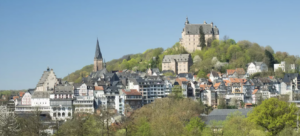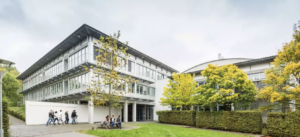MPI for Terrestrial Microbiology
Life without microorganisms is simply impossible. Microbes were the first life forms on early Earth. They evolved the ability to capture carbon dioxide and nitrogen, providing life with energy and nutrients. Microbes also invented photosynthesis, brought oxygen to the atmosphere and gave birth to multicellularity and the evolution of higher life. Microbes are more numerous and diverse than all other living organisms and there is no ecological niche that is not covered by them. They live in constant interactions with their environment, affecting health, agricultural productivity, and the climate on a global scale.
Our mission is to understand the function, communication, and interaction of microorganisms with their environment, to describe them with mathematical models, and to modify them with synthetic biological approaches.
We specifically focus on the microbial metabolism of greenhouse gases, the synthesis and function of bioactive natural compounds, cellular communication and regulation networks, as well as their spatial and temporal organization. Our research scale ranges from the atomic level up to global ecosystems.
How to find us
You can find us here:
Max-Planck-Institut für terrestrische Mikrobiologie
Karl-von-Frisch-Straße 10
D-35043 Marburg, Germany
By train and bus
By train (from the south via Frankfurt, from the north via Kassel) to Marburg main station. From the main station take the bus to “Marburg Botanischer Garten”. You can find the exact bus times via the connection search on the RMV website.
You will probably take one of the following city bus lines:
- Line No. 2, destination “Sonnenblick” (via “Universitätsklinikum”); travel time approx. 18 min.
- Line No. 7, destination “Universitätsklinikum” (via “Stadtmitte – Südbahnhof”); approx. 30 min
- Line No. 11, destination “Universitätsklinikum”; approx. 20 min
- Line No. MR75, destination “Kirchhain Bahnhof” (via “Universitätsklinikum”); approx. 15 min.
For more information about the bus schedule please check following website: http://stadtwerke-marburg.de/880.html
Pedestrian routes from the bus stops to the institute
Coming from the south, e.g. with line no. 7, get off at stop “Botanischer Garten”. Walk in the direction of “Botanischer Garten” – you do not need to cross the street. Then follow the sign “Max-Planck-Institut”.
If you are coming from the north, get off the bus at the “Botanischer Garten” stop: Go through the underpass to the building of the “Fachbereich Biologie”. Walk along the left side of the building, and you will see the MPI on the right and the SYNMIKRO center on the left.
Marburg
The university is the oldest protestant university in the world, founded in 1527. It boasts in its alumni Emil von Behring, the first ever winner of the Nobel Prize for Medicine. Brothers Jacob and Wilhelm Grimm, who collected many of their fairytales from around the region, also studied here, making the city a popular stop on the German Fairy Tale Road. A fairy tale trail through the city will lead you through its cobbled streets to all sorts of historical sights and quirky works of art.
The pedestrianised upper town, reachable by foot or using the free-to-use, glass-fronted lifts, is a charming network of winding streets and steep staircases lined with picturesque half-timbered buildings. The marketplace, home to a gorgeous 14th century town hall (Rathaus), is the city’s heart and a popular hangout for students.
The magnificent castle (Marburger Schloss or Landgrafenschloss) was built as a fort in the 11th century but today houses the university’s Museum for Cultural History (Museum für Kunst und Kulturgeschichte). On the other side of the historic botanical gardens (Botanischer Garten) stands St Elisabeth’s Church (Elisabethkirche), one of Germany’s oldest Gothic churches, complete with spectacular stained-glass windows.


